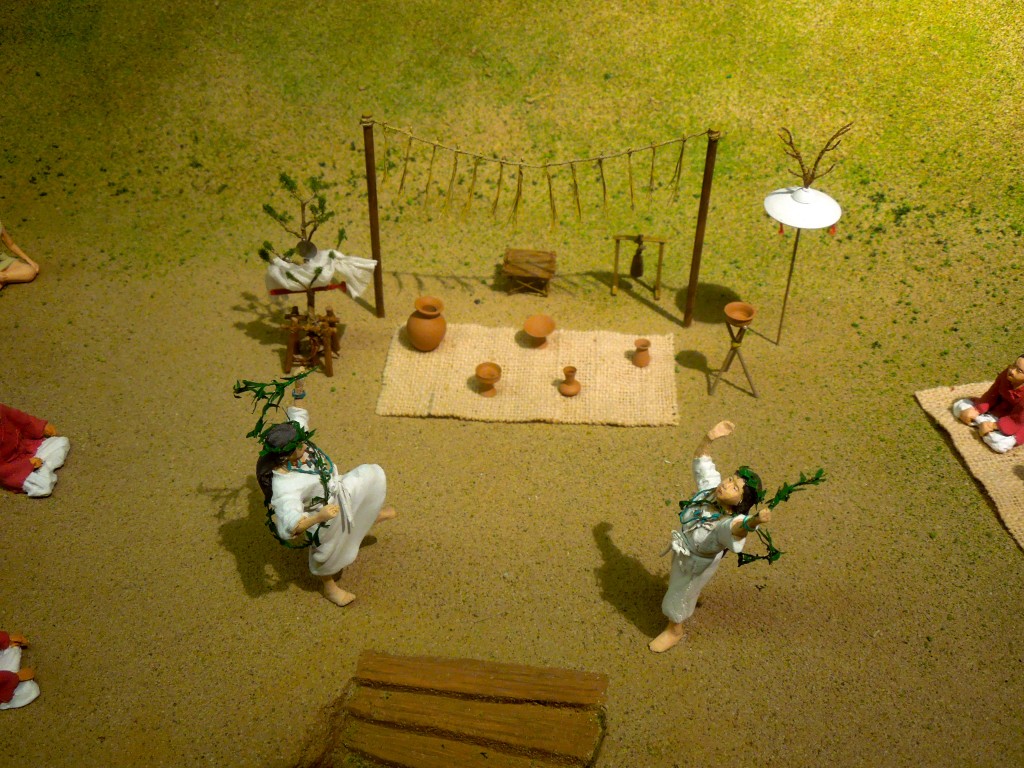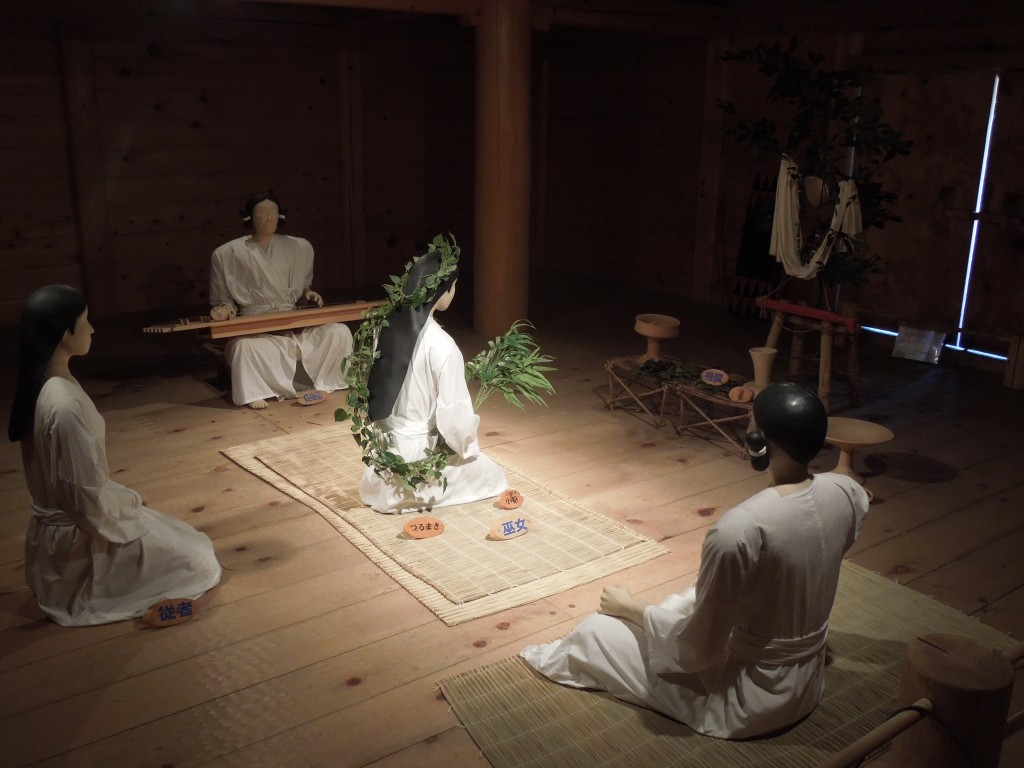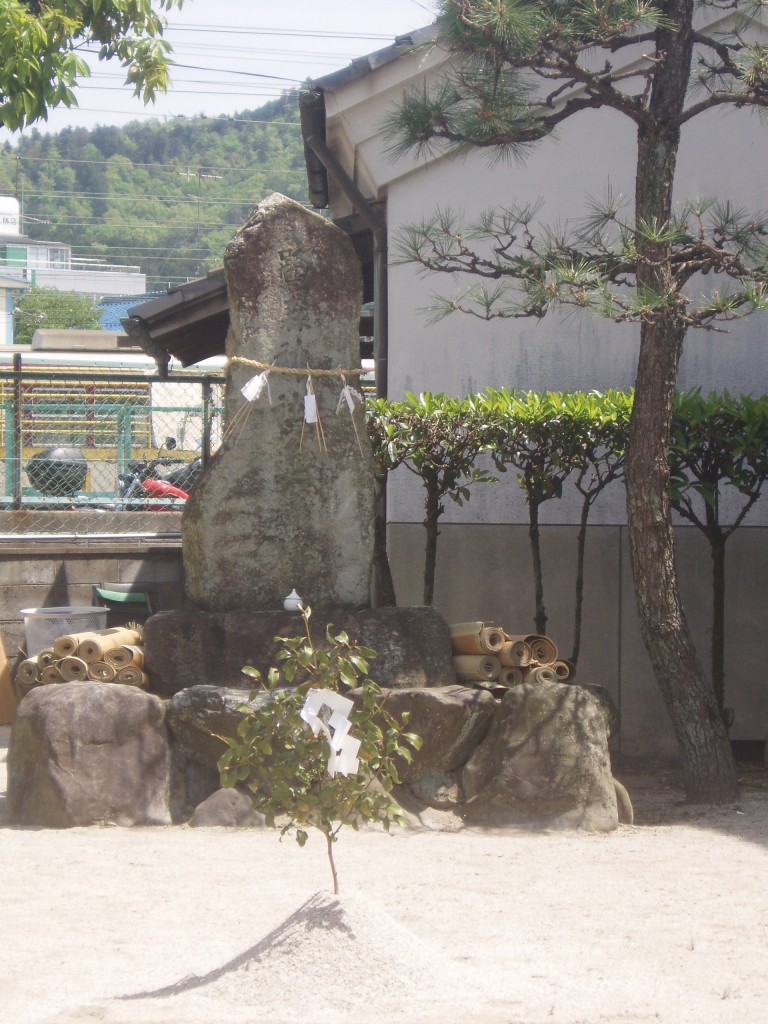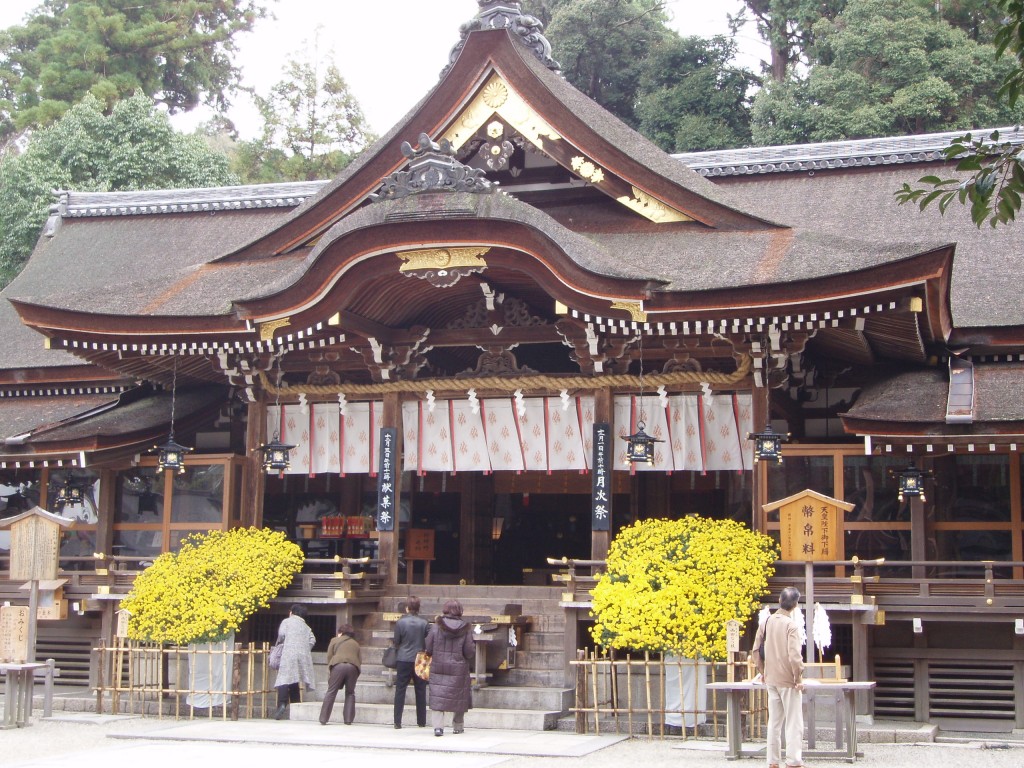
Model of how Yayoi ceremonies may have looked

Miko priestess conducting a Yayoi-era rite
Human settlement in Yayoi Japan (300 BC – 250 AD) was characterised by small groupings in river basins, surrounded by mountains and largely dependent on waterways both for rice cultivation and as a means of transport. In From Shinto to Ando (1993), Gunter Nitschke describes early belief as centering around the mountain-water-rice relationship, so vital to the survival of the small communities.
The need to guard against failure of the rice crop led not only to propitiation of localised kami, but to obeisance to the mighty kami responsible for the many disasters to which Japan was prone – earthquakes, volcanic eruptions, typhoons and tsunami. (The country lies on the interface of three major plates, as a result of which it has 10% of the world’s active volcanoes and is one of the most earthquake-prone countries on earth.)

A sakaki branch on a pile of earth, mimicking early hilltop worship of a sacred tree, acts as a yorishiro vessel into which to draw down the kami
Worship of kami took place outdoors in temporary sacred areas called himorogi, whereby a rope with shide (paper strips) was stretched between bamboo branches marking the corners of a square. (The himorogi are still used in ceremonies such as the jichinsai ground-breaking ceremony). Kami were nameless, formless and invisible, as if pure energy.
There are no written records to show what festivals or ceremonies were like, though it’s supposed that rites centred around the movement in spring of a mountain kami (yama no kami) down to the valley basins to preside over new growth, where it became known as the ricefield kami (ta no kami). In autumn, following the harvest, the kami would return to the mountains.
To foster the growth of their crops, the communities therefore developed two important rites, one in spring and one in autumn, as Nitschke notes: ‘The main festivals are related to kami-oroshi, “calling down (welcoming) the deity” to the field and kami-age “sending up (seeing off) the deity” to the mountain.’
Experts in archaeology have been able to piece together the probable development of kami worship thereafter, and an account is given in the authoritative Kokugakuin University Encyclopedia of Shinto. At some point during the Yayoi era, the kami came to be regarded as inhabiting natural phenomena such as trees, rocks, waterfalls and mountains. These were conceptualised as the ‘spirit-body’ of the kami (goshintai) and worshipped as sacred objects. The ancient Omiwa Jinja is a famous example of a shrine which still carries out direct worship of ‘a spirit-body mountain’ (kannabi).
In time the animist spirits were conflated with ancestral clan deities, which were tutelary gods of particular tribal groups. Attachment to the land thus went hand in hand with ties of blood: ‘there was no sharp distinction between a deity of nature and a spirit of the dead,’ writes religious scholar Masaharu Anesaki. Ancestors thus merged into the landscape they inhabited.

Omiwa Jinja, which to this day has no Honden (Sanctuary) but worships directly the sacred body of the mountain

Hey, those first two photos are from Yoshinogari in Saga, right? Fantastic place…
Hello Avery. You’re right, they are from Yoshinogari, and I agree it’s a great place and well worth visiting. Impressive reconstruction and some nice opportunities for hands-on Yayoi experiences like dancing and making magatama…..